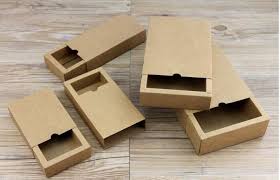
There are a number of reasons why some products capture buyers’ attention in an instance while others grow old on the shelves. Well, the ultimate choice for your product packaging label could be one of them. At least 1/3 of customers’ buying decision is entirely based on the item packaging and labelling.
Suffice to say, a well-designed label could have a significant contribution to the success of the marketing strategies of your business. Your item label is responsible for luring customers to choosing your item from the many options on the store shelf.
It is inarguable that labelling goes hand in hand with packaging and is an overly integral marketing tool. Consequently, graphic designers must go over and beyond in designing product labels that are most attractive to the clients. Choosing the best label for your packaging requires you to understand the many options at your disposal and the factors to consider.
Be sure to pay attention to the expected product handling, warehouse capability, and product regulation requirements. Remember to consider the product shape, the prospective environment it will be exposed to, and your budget before deciding on the best packaging label for your item.
All the same, your prospective market and their buying habits profoundly influence your labelling decisions. So, what are the labelling options for you?
Pressure Sensitive Labels
They are commonly used in foods and consumer goods owing to their ease of use and the wide array of varieties. Pressure-sensitive labels can be customized into numerous shapes and sizes. Besides, they come in a range of textures and adhesives to suit different manufacturers’ needs. They are best suited for both manual and automated applications though they have their shortcomings.
The application surface material, whether plastic, glass stainless steel, or powder-coated metal, influences your adhesive choice. There are different regulatory requirements and specifications for specific labelling adhesives, and as such, you should ensure you brush up on your compliance.
It is also important that you consider how you store your labels. In most cases, adhesive labelling should be stored in a climate close to 72 degrees and 50 percent humidity to enhance its durability.
Shrink Sleeves
Here are the most versatile packaging labels you will ever find in the market. Shrink sleeves can conveniently form around the item they encase. Besides, they provide a 360-degree working area where your designer can easily display the relevant message around your product. Whether you are interested in covering the entire product or part of it, shrink sleeves are the perfect option for you. For instance, you can choose tamper bands for your product security, while mid-sleeve is perfect for a beverage container.
Dry-Peel Labeling
They are mostly used for coupons. Dry-peel labels are placed on a package and are easily removable to be used at a register to redeem points for purchase discounts. You can also use them for repeat purchases at a future date. Dry peel labels are mostly preferred as they keep the most relevant information on the primary label just below the peel-away label. Most importantly, they provide extra designing space for your graphic designers to work on.
Reseal Booklets
With a little modification, you can utilize dry-peel labels as foldout reseal booklets. Typically, the labels employ an adhesive that enables the booklet to fold back and fully compress onto the package. As such, they remain easily accessible for future needs. With an additional capacity, the reseal booklets provide extra information for the user which cannot be contained on the package. The labels are mostly used on OTC medications and pharmaceuticals with dosage information and warning to the end-user.
Printing Technology
To achieve the best label design, you should ensure that you match the print technology with the product application. First, you should decide on whether to go for in house printing or pre-printed labels. Second, you need to have quality labels to showcase the printing information clearly to your customers. Some of the most in-house printing methods include:
- Inkjet
- Laser
- Thermal transfer
- Direct thermal or
- Do matrix
With all the labelling options available, choosing the best label material can be quite dizzying. Luckily, we have equipped you with some of the best ways to identify common elements that might affect your labelling and product success. Therefore, you can easily choose the labelling option that is best suited for your application needs.











